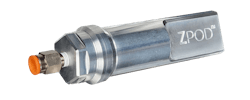Viscosity is probably the single most important characteristic of oil that affects the engine. By definition, viscosity is a measure of oil’s resistance to flow, and it is measured at one or more standardized temperatures so that we can define viscosity grades of engine oils. It’s important to understand that the viscosity of engine oil changes continuously as the temperature of the oil changes. A properly formulated engine oil of the proper viscosity grade will provide a lubricant film in-between moving parts in the engine and protect them from wear. Viscosity characteristics of the oil will also affect things like oil consumption rates, low-temperature oil flow to the engine, and the speed at which the engine will crank — especially if the ambient temperatures are cold.
Viscosity requirements
Factors such as application speed, load, and operating temperature are all important factors influencing the choice of the correct oil to apply in any application. Generally, low viscosity oils are preferred for applications where either high speeds or low temperatures and pressures are present. When application speeds are reduced or operating temperatures are increased, the viscosity of the oil required to provide lubrication also increases.
Choosing an oil with the correct viscosity for any given application requires consideration of all the operating and environmental factors that the lubricated surfaces will be subject to in use. Basically, the oil must be thick enough to provide an adequate separation of the lubricated surfaces. That is heavily influenced by the speed, load, and surface temperatures that the surfaces will be exposed to in operation. The ideal oil for a given application will be viscous enough to ensure a proper fluid film under all operating conditions, yet fluid enough to avoid power losses resulting from excessive fluid friction.
Generally, we use the lowest viscosity oil in an application that will support the required loads. Sometimes, all of these criteria can result in a scenario where almost any oil will do, although it may not be optimal. Other times, it can be difficult to identify a single oil that will function adequately in the entire range of operating or environmental conditions that an engine may be subject to. For instance, an aircraft piston engine generally requires a fairly heavy oil to provide good lubrication due to design, cooling, and normal engine operating parameters. But high viscosity oils are usually limited in their ability to provide adequate flow characteristics at very low winter-time ambient temperatures. Therefore, aircraft piston engine designers must resort to the use of supplemental crankcase heaters for aircraft that must start under those cold conditions because using an oil with low enough flow characteristics at those low temperatures that would allow an engine to start when it is cold would not provide adequate protection when the engine gets to normal operating temperatures.
Viscosity measurement systems
Two common viscosity measurement systems are the Saybolt and Kinematic systems. These systems differ in the design used to make the measurement and the way it is calibrated, but the principle is the same. Oil to be measured is contained in a vessel which is immersed in a bath at a constant temperature. Remember viscosity of oil changes as temperature changes. So, if we are going to understand the viscosity of an oil, we need to understand the temperature at which the measurement was taken.
Once the temperature of the sample is allowed to stabilize, the sample is allowed to flow through a calibrated restriction (basically this is a fancy funnel). The time for a measured volume to pass through the restriction is measured. The higher the viscosity of an oil, the longer it will take to flow through the funnel.
Multi-grade oil
Remember that the viscosity of an oil changes constantly as temperature rises and falls. A viscosity index is a way to measure the rate at which that viscosity change occurs. Engine oil viscosity is measured and standardized in a document managed by the Society of Automotive Engineers (SAE) called SAE J300, and it defines the requirements of each SAE viscosity grade.
Single-grade oils are by definition oils that meet the requirements of only one grade defined in SAE J300. Multi-grade oils will meet the requirements of two grades as SAE J300 defines them. Multi-grade oils will meet the requirements of one W-grade on the SAE grading scale, and one non-W-grade. An SAE 10W and an SAE 30 are examples of single-grade oils that would meet the requirements of only one of the defined SAE grades. It’s entirely possible to formulate an oil that would meet the viscosity requirements of both of these grades, in which case the oil would be defined as a multi-grade SAE 10W-30.
The viscosity of multi-grade oils changes with temperature at a slower rate than it does with an equivalent single-grade oil. And when calculated, they will have a higher viscosity index number than similar single-grade products.
In order to formulate a multi-grade oil, an additive is used that alters the rate at which the viscosity of the oil changes with temperature change. These additives are chemical polymers that are commonly referred to as viscosity index improvers. Each W grade in the SAE grading system looks at low temperature viscosity at a different temperature due to the wide variability of the viscosities of different oils at the low end of the scale, where the oil may be nearing its pour point, or that temperature where it effectively begins to transform from a liquid to a semi-solid state.
Multi-grade oils feature several performance advantages over single-grade oils, particularly in ambient conditions that are less than ideal. They offer their greatest advantages when an engine must operate at the extremes of ambient conditions, either hot or cold. They tend to be cleaner burning because they allow the formulator to cut back on the use of a lubricant base blending oil called bright stock that tends to contribute more heavily to the formation of engine deposits as the oil is burned. When engine oil sump temperatures are high, a multi-grade oil will actually maintain a higher viscosity than its single-grade counterpart. SAE 15W-50, 20W-50 and 25W-60 are all common grades of aviation piston engine oil.
Types of friction
Friction is the force that provides resistance when two surfaces attempt to move relevant to each other. Reduction, and ideally the elimination, of friction is the primary function of a lubricant. There are three types of friction we will discuss: sliding friction, rolling friction, and fluid friction.
Engines experience both sliding and rolling friction at various points depending on engine design. Friction also results from the flow of a lubricant. This type of friction is called fluid friction. Although much less of a factor than solid friction, it also factors into the amount of energy that is required to turn the engine, particularly during start-up when the lubricant is the most viscous. Proper balance of fluid friction with solid (either sliding or rolling) friction is the key to a properly functioning engine.
Sliding friction
When two surfaces move relative to each other, coming into contact with each other, the resulting sliding friction provides resistance against that motion occurring. The amount of friction is dependent on such factors as the weight of the two surfaces, the speed at which they are moving, surface finish of those surfaces, and any external pressures applied. The amount of friction will directly influence the rate at which the surfaces will wear as friction occurs.
Rolling friction
Rolling friction requires much less force to overcome, and produces less heat since the actual contact surface providing resistance is much smaller than with sliding friction. This principle illustrates the desirability of ball and roller type bearings where their design is compatible with the equipment design, rather than the use of plain sleeve type bearings where there is much more contact area and sliding friction is the type of friction we have to overcome.
Fluid friction
Fluid friction provides the least amount of resistance to overcome when two surfaces are moving relative to each other. It occurs as fluid molecules slide past each other. Since they are pliable and elastic in nature, fluid friction produces the least amount of heat resulting from friction and takes the least amount of energy to overcome. In general, lubrication is the substitution of fluid friction for solid friction.



